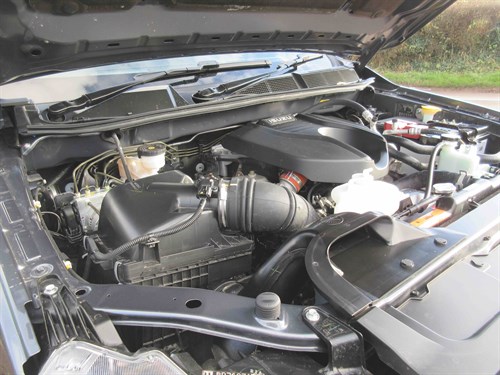- Further 4.25t electric van rule changes under consideration
- Arval research uncovers van fleet optimism
- Pre-orders open for new Nissan Interstar
- More than half of UK van drivers now believe EVs more cost effective than ICE, VW finds
- Public EV charging costs preventing adoption for some fleets, AFP says
- Ford Ranger Tremor review
- Inseego awarded Crown Commercial Service framework status
- ADVERTISEMENT FEATURE: Electrify and optimise: Digital solutions at the forefront of decarbonisation
- Fleets being pushed to take electric vans due to ZEV mandate, AFP reports
- Buying a used... Citroen Relay (2019)
The What Van? Road Test: Isuzu D-Max (2023)
Date: Monday, January 22, 2024

Powertrain
Keyless ignition with a push-button start fires up the Isuzu’s four-cylinder turbocharged engine. Maximum power kicks in at 3,600rpm while torque of 360Nm bites across a 2,000rpm-to-2,500rpm plateau.
AdBlue is used to ensure the engine complies with the Euro 6 exhaust emission rules. The filler point for the 14-litre reservoir is located beneath a flap on the nearside of the body which also conceals the diesel refuelling inlet.
Driving
We’re getting so familiar with electronic parking brakes that reverting to a manual handbrake lever such as the one fitted to D-Max takes a bit of getting used to, and we had to be reminded to release it on at least a couple of occasions. Perhaps it is just as well then that acceleration from rest is not all that brisk.
Nor does the kick-down facility engage all that rapidly when you need to overtake. It is as though the engine is having to take a deep breath before pouring on the power required.
Put the engine under pressure and it can sound noisy and stressed. Show the truck an incline and you immediately drop down a gear, especially if you are heavily laden, and your momentum slows.
What we are saying here is that D-Max needs more power, especially if it is operating in hilly terrain and is being asked to haul a heavy trailer. While we readily concede that what is on offer at present will satisfy many businesses, Isuzu really needs to introduce a 200hp-or-thereabouts diesel as an option if it wants to stay abreast of
the competition.
If it does so, then more operators will be able to take advantage of the truck’s undoubted virtues. Unfortunately, there are no plans to provide D-Max with more beef.
Solidly constructed, it handles well, with none of the lurching and swaying into bends that might be expected from such a big truck. We were able to corner with confidence.
It rides well too even when lightly laden. If they have no weight in the back then many 4x4 pick-ups tend to hop about all over the place.
Grab handles on the A- and B-pillars give the cab’s occupants something to hang onto when the truck ventures off-road, and a lack of top-end power did not impede its non-stop progress through the mud.
Our demonstrator happily sloshed up and down squelchy slopes and trundled up and down heavily rutted rural tracks, casually shrugging off any and all obstacles it encountered. It crossed and recrossed streams brimming with icy water without hesitating, and willingly came back for more.
Just as well that there is plenty of underbody protection, including a steel guard for the engine sump, transmission and transfer case.
View The WhatVan Digital Edition


